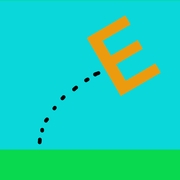Losing the "E" in E-Learning
By Tamara Neff, MA | July 13, 2015
E-Learning Curriculum Developer, ETR
As technology is further integrated into our daily lives (and our very beings), so it has become an essential part of the learning experience. We see it from early childhood development on through emerging K-12 education standards. We find it in popular online higher education and professional development programs.
Technology continues to enhance and improve the quality and quantity of learning opportunities available to an ever-widening population of learners. This is true to such an extent, the “E” in E-learning is becoming redundant. Many of us in the field might assert that it already has done so.
The Future Is Here
“It is useless to resist.” So says the epic Star Wars villain Darth Vader. Unlike the fateful origins of that famous line however, the futility of resisting the further integration of tech tools into the learning function is a good thing.
Whether it happens is no longer a viable question. How it happens is now a key part of any worthwhile education design. And for technophiles and technophobes alike, addressing the key question of how to best utilize education technology for the learning function is essential to the success of any education design effort.
The good news is that the fundamental components of an effective learning experience do not change simply because of the emergence of tech tools. The science of learning remains at the core of sound instruction and quality education. It is also at the heart of properly utilized tech tools in learning practice.
Some Examples
Learning styles. We do not all learn in the same way. Different minds process information differently. One advantage of incorporating multimedia deliveries into instructional practice is the opportunity to appeal to the broadest possible range of different learning styles.
The potential here is incredibly exciting. As technology rapidly advances in immersive, virtual, and wearable interfaces, for example, using this tech to engage kinetic/tactile learners will soon be as standard as using multimedia tools for audio/visual learners is today.
Experiential scenario-based approaches. Similarly, immersive tech will soon give rise to even richer web-based and computer augmented learning experiences. Are you using role plays or video vignettes in your current education efforts? It won’t be long before scenario-based experiential designs are able to engage learners in real-world problem solving in extremely lifelike environments.
Feedback. On-time formative feedback is essential to the learning experience. Technology enhances the ability to deliver this feedback effectively and appropriately. This is beautifully summarized in this presentation by Martin Dougiamas, Founder of Moodle, the popular open source online learning platform (starting at 15 minutes into the video—this link takes you right to that point).
Anticipated Futures and Present Realities: The Digital Divide
While anticipating the future of improved learning through technology, we must also bear in mind the present reality of access inequality. In order for everyone to benefit from the true potential of education technology, everyone must be able to access and use it.
The digital divide is a very real barrier preventing many from accessing tech-enhanced learning experiences. The solution to that requires attention from all corners of the education field.
Quality learning experiences will continue to utilize technologies. In fact, that trend is bound to increase rapidly. We must resolve the factors that contribute to the digital divide—for example, by ensuring access for communities in poverty and those who are geographically isolated or lack reliable infrastructure. This is key to realizing a future in which education technology is fully integrated into the learning experience.
At the same time, many learners who might otherwise miss an educational opportunity due to challenges such as limited mobility, audio/visual impairment, or language proficiency are now able to take greater advantage of learning experiences utilizing tech tools designed to address those needs. As in other areas of learning , these opportunities and capacities will continue to expand with ever-increasing technology options.
Solving (Almost) Every Problem
Is there a technology solution to every learning problem? I don’t believe so (though I’m sure others would disagree).
I do believe that most approaches, techniques and experiences in the field of education and instruction can be enhanced and improved by utilizing the right tech tools. And I believe this will continue to hold true—in fact, that tech tools will become so completely integrated into the learning experience that we hardly notice them.
So let’s start now. Let’s continue to embrace the current capabilities of education technology to design and deliver effective learning. Let’s anticipate the future of technology-assisted learning by contributing to the conversation about best practices to improve the learning experience overall.
I intended to use another Star Wars reference here, but I’ll just make my appeal plain: let’s lose the “E” in E-learning. And let’s keep learning together how technology will continue to help us learn.
Tamara Neff, MA, is the E-Learning Curriculum Developer at ETR. She has extensive experience in the field of adult learning, particularly in online and blended learning designs. She can be reached at tamaran@etr.org, and you can follow her on Twitter at the handle @TamaraNeff.





